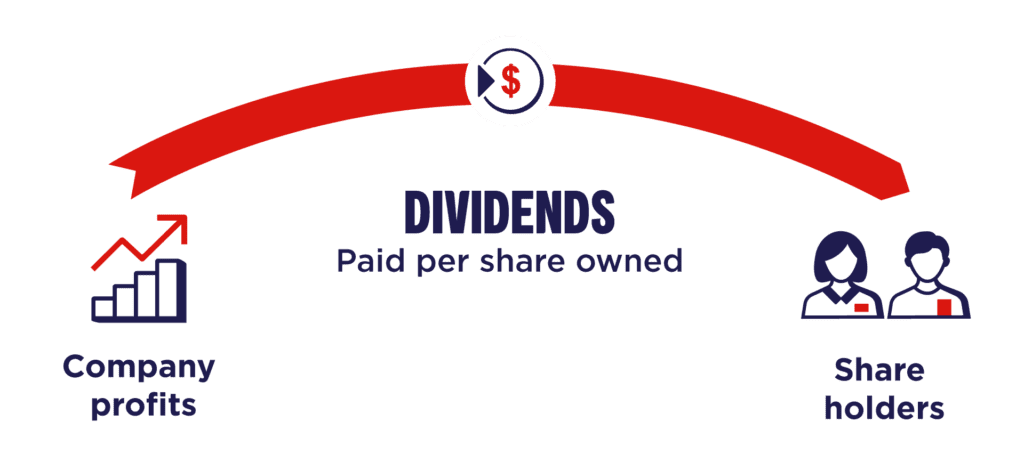When it comes to investing, dividends can be an attractive proposition for many. But what about a company like Google, a tech giant that has never paid dividends? In this in-depth look, we’ll explore the question, “does Google pay dividends?” and the reasons behind its dividend stance, as well as the potential impact on investors. Whether you’re a curious investor or simply want to know more about Google’s financial strategy, read on to discover the fascinating world of dividends and Google’s unique approach.
Key Takeaways
Google’s parent company, Alphabet Inc., has a growth-focused mindset and does not pay dividends.
Investors may benefit from this approach through share price appreciation and potential capital gains.
Market conditions, investor sentiment, company maturity and other factors influence dividend policies in the tech sector. Apple’s history provides insight into advantages of paying dividends.
Google’s Dividend Stance
The influence of its parent company, Alphabet, and a focus on growth and expansion into new ventures shapes Google’s decision not to pay dividends. This is a common practice for many technology companies that prioritize investment in growth over distributing cash equivalents to shareholders due to financial constraints. Google’s strategy for preserving profits enables the company to have financial flexibility to rapidly take advantage of opportunities, a tactic particularly visible in its background of acquisitions and services like Google Pay. Alphabet is currently a diversified tech conglomerate with an annual revenue in FY2023 of approximately $289.531 billion and is highly profitable.
Despite its core advertising business generating substantial profits with minimal investment, Google opts not to pay dividends. Instead, Google maintains a growth mindset, reinvesting its profits into R&D and new ventures to support rapid growth. This approach has led to Alphabet generating almost $22 billion in free cash flow over the last four quarters and investing in “moonshot” businesses within its other bets segment, such as the Waymo autonomous vehicle unit and Verily life sciences. These investments contribute to Alphabet’s operating expenses of $22.5 billion in its other bets segment over the last five years, affecting the company’s marketable securities and its ability to pay dividends.
Related Article: What Does Overweight Stock Mean?
Google’s Parent Company: Alphabet

Alphabet, Google’s parent company, emphasizes constant evolution and the reinvestment of profits over dividend payments. The company’s mission statement highlights Google’s unconventional nature and dedication to meaningful projects with available resources. Proponents of dividend payments by Google’s parent company contend that it can do so without compromising its financial stability.
Currently, Alphabet’s subsidiary Google X is developing the following projects:
Industrial robotics
AI for growing food
Underwater camera systems
Autonomous delivery drone service
These projects require significant investments, reinforcing Alphabet’s commitment to growth and innovation over dividend payouts.
The Impact of Not Paying Dividends on Investors
The impact on investors of not paying dividends can be seen in stock price appreciation and long-term growth potential. While companies in the technology industry often prioritize investment in growth over distributing cash to shareholders, there are advantages to paying dividends for investors, such as providing a consistent source of income and enabling existing shareholders to reap the rewards of capital returns.
However, Google’s decision not to pay dividends allows for increased share price growth and capital gains for investors. This approach may be more attractive to investors seeking long-term growth and stability in their portfolio, as opposed to those looking for consistent income from dividend payments.
Long-Term Growth Potential
By forgoing dividends, a company can channel its earnings into further growth and expansion, potentially yielding higher profitability and value creation over time. By retaining earnings, the company has more capital to invest in its operations, which can result in increased profitability and value creation over time. This growth-focused approach can be advantageous for investors seeking stability and growth in their portfolio, as the company’s long-term prospects may be more attractive than those of dividend-paying counterparts.
Potential catalysts that could lead to a shift in Google’s dividend policy could include:
A change in the company’s focus from growth to profitability
A shift in the company’s leadership
An alteration in the company’s financial position
Modifications in the tech sector’s dividend policies
Market trends
These factors could potentially contribute to a change in Google’s dividend policy.
Comparing Google to Other Tech Giants
In contrast to other tech giants, some of which pay dividends while others adopt a growth-focused approach similar to Google, Google’s dividend policy is unique. Tech giants such as Apple and Microsoft have established dividend policies, with Apple paying dividends for ten years and Microsoft for two decades. On the other hand, tech giants including Facebook and Amazon have not been paying dividends.
This comparison highlights the varying dividend policies in the industry, with some companies focusing on growth and others returning value to shareholders through dividends. As a result, investors must consider a company’s specific approach to dividends when making investment decisions and assessing potential returns.
Dividend Yields of Tech Sector Peers
The variation in dividend policies across the industry becomes evident when comparing dividend yields among tech sector peers. Companies such as:
- International Business Machines (IBM): Provides a 5% yield on their dividends. They also have a long history of paying dividends, and has increased its dividend payout for 27 consecutive years.
- Qualcomm (QCOM): Provides a 2.7% yield on their dividends. Qualcomm has also been increasing its dividend payout in recent years.
- Oracle (ORCL): Provides a 1.6% on their dividends. Oracle has a strong track record of paying dividends and is committed to returning capital to shareholders.
- Microsoft (MSFT): Provides a 1.1% on their dividends. Microsoft has a relatively low dividend yield, but it is growing its dividend payout at a healthy pace.
Companies in the tech sector have varying dividend yields, demonstrating the diverse approaches to dividends within the tech sector and is an important factor to consider when evaluating these companies.
This comparison illustrates the diverse dividend policies in the industry and the potential implications for investors seeking income or growth from their investments.
Related Article: Understanding Stocks Vs. Options
Market Trends and Tech Sector Dividend Policies
Market trends and tech sector dividend policies show a mix of growth-focused and dividend-paying companies. Current trends include:
An increase in dividends from profitable tech stocks
A notable contribution of tech sector dividends to the S&P 500 index
Scarcity of dividend-paying tech stocks
Some tech stocks providing both growth and income with dividend yields above 2%.
Investors must carefully consider a company’s specific dividend policy when making investment decisions and assessing potential returns.
The Pros and Cons of Google Paying Dividends

Source: kenyanwallstreet.com
Google paying dividends brings both benefits for investors and potential disadvantages for the company. Dividends provide investors with a consistent source of income and enable existing shareholders to reap the rewards of capital returns. However, paying dividends can also result in a decrease in cash reserves and the establishment of an expectation for future dividend distributions.
While the dividend irrelevance theory postulates that dividend payments have no impact on the value of a company’s stock, the decision to pay dividends can have both positive and negative implications for investors and the company itself.
Benefits of Paying Dividends
The payment of dividends can illustrate financial stability, draw in investors, and offer a dependable income for shareholders. Companies that pay consistent dividends tend to demonstrate solid financial performance and a reliable revenue stream, which can be attractive to investors seeking stable returns. Additionally, paying dividends can demonstrate to investors that the company is financially sound and has a promising future, which can lead to increased investor trust and a more secure stock price.
However, Google’s growth-focused approach has resulted in substantial share price appreciation and the potential for even greater capital gains for investors. This strategy may be more appealing to investors seeking long-term growth and stability in their portfolio, as opposed to those looking for consistent income from dividends.
Drawbacks of Paying Dividends
Potential downsides of paying dividends include:
Double taxation: Dividends are taxed at the corporate level as earnings and again at the personal level when received by shareholders, potentially reducing the overall return for shareholders.
Diminished financial flexibility: Paying dividends reduces the amount of cash available for the company to reinvest in growth opportunities or to handle unexpected expenses.
Diverted focus from growth opportunities: Prioritizing dividend payments may shift the company’s focus away from investing in new projects or expanding its operations.
Disbursing dividends can diminish a company’s financial flexibility, as the dividend amount is typically determined at a constant rate and does not vary from quarter to quarter.
Distributing dividends can also redirect resources away from growth opportunities, as the company may opt not to pay dividends in order to persist in its pursuit of new ventures. As Google continues to focus on growth and expansion, the potential drawbacks of paying dividends may outweigh the benefits for both the company and its investors.
Future Possibilities for Google’s Dividend Policy
Potential drivers of change and observations from Apple’s dividend history may indicate that Google may eventually offer a dividend. Apple’s decision to start paying dividends after years of resistance serves as a reminder that even growth-focused companies may eventually adopt dividend policies. This shift in strategy can lead to increased investor trust and a more secure stock price, as well as providing a consistent source of income for shareholders.
As a result, investors must continue to monitor Google’s dividend policy and consider the potential implications for their investment strategy.
Lessons from Apple’s Dividend History
Other tech companies can learn valuable lessons from Apple’s dividend history, which illustrates the potential benefits of paying dividends, such as bolstered investor trust and a more stable stock price. As Apple transitioned from a growth-focused company to one that pays dividends, it demonstrated the potential benefits of this shift for both investors and the company itself.
Google may eventually follow a similar path, adopting a dividend policy as the company matures and its growth opportunities evolve.
Summary
In conclusion, Google’s unique stance on dividends sets it apart from other tech giants, reflecting the company’s focus on growth and innovation. While there are both pros and cons to paying dividends, Google’s current approach allows for greater share price appreciation and long-term growth potential for its investors. As the company continues to evolve, potential catalysts for change, may influence Google’s decision to pay dividends in the future.
Frequently Asked Questions
Will Google ever pay a dividend?
Google does not currently pay a dividend and has never done so in the past. It remains unclear if Google will ever pay a dividend.
Who pays highest dividend?
Devon Energy (NYSE:DVN) pays the highest dividend (10.5%) among the high-dividend stocks with Altria Group (NASDAQ:MO) and Walgreens Boots Alliance (NYSE:WBA) close behind.
Will Amazon or Google ever pay a dividend?
Amazon and Google have never paid dividends to shareholders, choosing instead to prioritize growth opportunities such as acquisitions and investments in their own businesses. While other tech companies do offer dividends, it appears unlikely that Amazon and Google will follow suit in the near future.
When did Google last pay dividend?
Google has never paid a dividend since its restructuring into Alphabet Inc. in October 2015, despite having over $118 billion in cash, cash equivalents and marketable securities on its balance sheet.
Why doesn’t Google pay dividends?
Google’s parent company, Alphabet, prefers investing profits back into the company to fuel growth and expansion rather than paying dividends.




